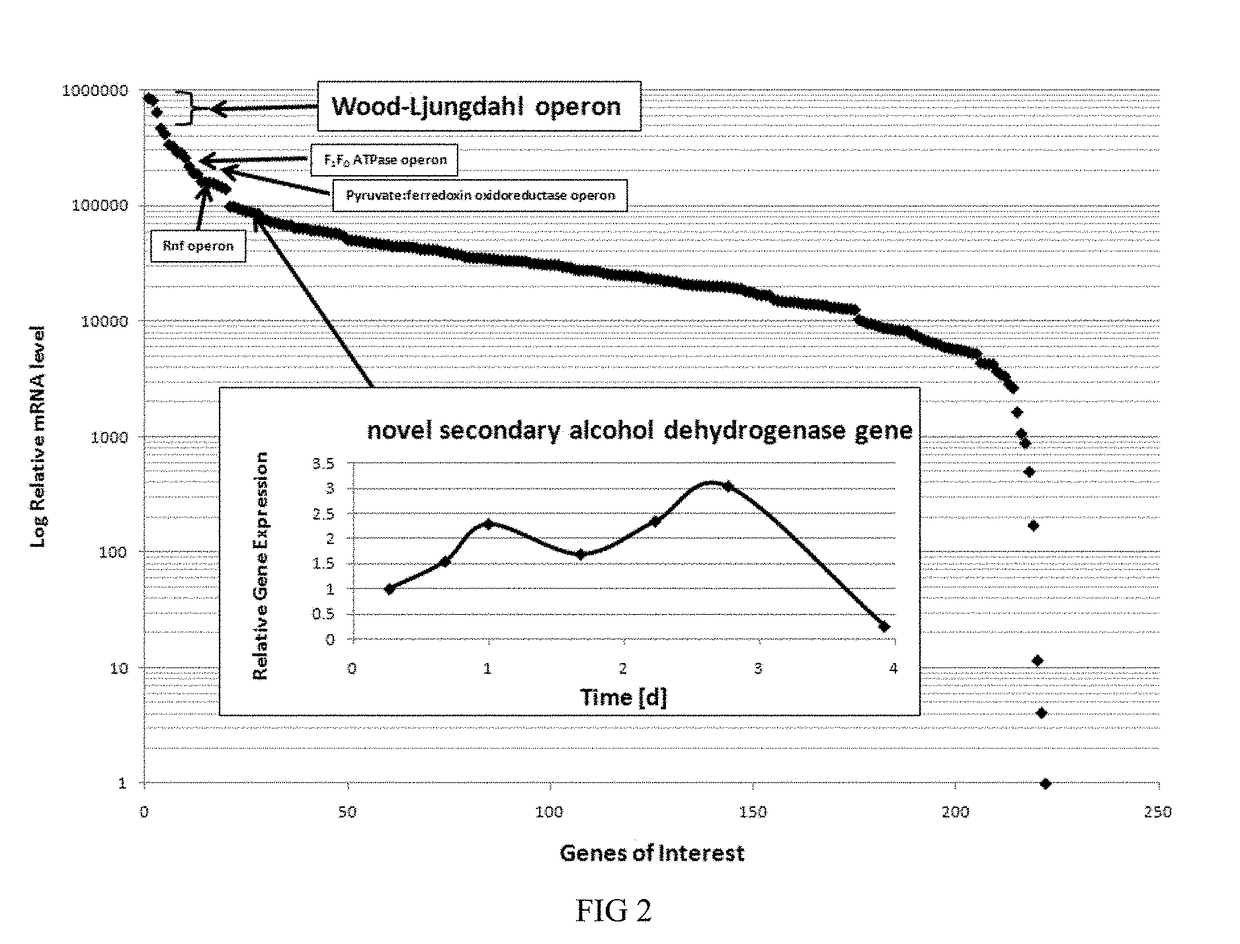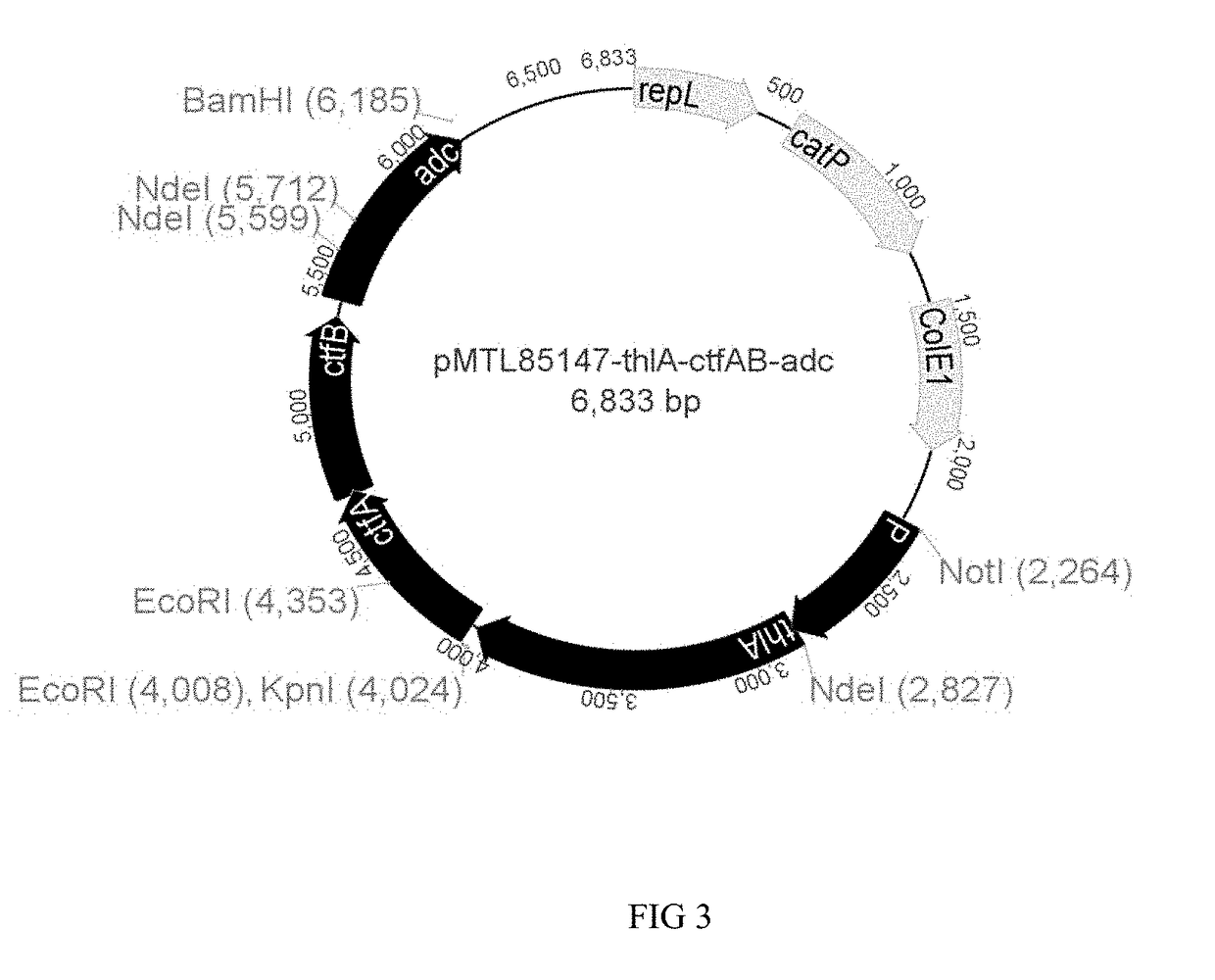Recombinant microorganisms and uses therefor
a technology of recombinant microorganisms and recombinant cells, which is applied in the direction of lyase, transferase, bulk chemical production, etc., can solve the problems that the production of starch or sucrose-producing crops is not economically sustainable in all geographies
- Summary
- Abstract
- Description
- Claims
- Application Information
AI Technical Summary
Benefits of technology
Problems solved by technology
Method used
Image
Examples
examples
[0349]The invention will now be described in more detail with reference to the following non-limiting examples.
Microorganisms and Growth Conditions
[0350]Acetobacterium woodii DSM1030, Clostridium aceticum DSM1496, C. autoethanogenum DSM23693, C. carboxidivorans DSM15243, and C. ljungdahlii DSM13528 were sourced from DSMZ (The German Collection of Microorganisms and Cell Cultures, Inhoffenstraβe 7 B, 38124 Braunschweig, Germany). C. autoethanogenum DSM23693 is a derivate of C. autoethanogenum DSM10061.
[0351]C. ragsdalei ATCC BAA-622 were sourced from the American Type Culture Collection, Manassas, Va. 20108, USA.
[0352]C. acetobutylicum ATCC824, C. beijerinckii NRRL-B593, and C. beijerinckii NCIMB8052 were obtained from Prof. David Jones (University of Otago) and can also be obtained from public strain collections DSMZ and ATCC under accession numbers ATCC824 / DSM792, DSM6423, and ATCC51743 respectively.
[0353]Escherichia coli DH5α-T1R was sourced from Invitrogen, Carlsbad, Calif. 92008...
PUM
 Login to View More
Login to View More Abstract
Description
Claims
Application Information
 Login to View More
Login to View More - R&D
- Intellectual Property
- Life Sciences
- Materials
- Tech Scout
- Unparalleled Data Quality
- Higher Quality Content
- 60% Fewer Hallucinations
Browse by: Latest US Patents, China's latest patents, Technical Efficacy Thesaurus, Application Domain, Technology Topic, Popular Technical Reports.
© 2025 PatSnap. All rights reserved.Legal|Privacy policy|Modern Slavery Act Transparency Statement|Sitemap|About US| Contact US: help@patsnap.com



